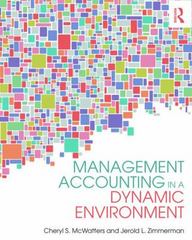Question
This is a timed quiz. i have 40 min to answer these questions please help 1. A one-year, $20,400, 14% note is signed on April
This is a timed quiz. i have 40 min to answer these questions please help
| 1. A one-year, $20,400, 14% note is signed on April 1. If the note is repaid on August 1 of the same year, how much interest expense is incurred?(Do not round intermediate calculations.) |
A. $714B. $952C. $2,856D. $1,190
2. Current liabilities could include all of the following except: A. an accounts payable due in 30 days.B. a notes payable due in 9 months.C. a bank loan due in 18 months.D. any part of long-term debt due during the current period. 3. Issuing a note payable for cash immediately results in a(n): A. increase in assets and an increase in liabilities.B. decrease in assets and an increase in liabilities.C. decrease in assets and a decrease liabilities.D. increase in liabilities and a decrease in stockholders' equity.
4. The following 12%, $1,000 notes were issued on December 1. Which of the following is the correct method of calculation for the interest accrued as of December 31 of the same year on each of the notes described?A. Interest on a 4-month note is calculated as: $1,000 12% 1/12.B. Interest on a 3-month note is calculated as: $1,000 12% 1/3.C. Interest on a 4-month note is calculated as: $1,000 12% 1/4.D. Interest on a 2-year note is calculated as: $1,000 12% 1/24.
5. A company pays $9,000 in interest on notes consisting of $6,000 of interest that was accrued during the last accounting period and $3,000 of interest that accumulated during the current accounting period but has not yet been accrued on the books. The journal entry for the interest payment should include a:A. debit to Interest Expense for $9,000 and a credit to Cash for $9,000.B. debit to Cash for $9,000 and a credit to Interest Payable for $9,000.C. debit to Interest Expense for $3,000, a debit to Interest Payable for $6,000, and a credit to Cash for $9,000.D. debit to Interest Payable for $6,000, a debit to Accrued Interest for $3,000, and a credit to Cash for $9,000.
6. Unearned revenues are liabilities because:
A. no cash has changed hands.B. goods or services have been paid for, but not yet provided to the customer.C. the company is transferring them to another period for tax reasons.D. the customer may someday return items purchased for a refund.
7. A contingent liability is:
A. always a specific amount.B. an obligation arising from the purchase of goods or services on credit.C. an obligation not requiring a future payment.D. a potential obligation that depends on a future event.
Step by Step Solution
There are 3 Steps involved in it
Step: 1

Get Instant Access to Expert-Tailored Solutions
See step-by-step solutions with expert insights and AI powered tools for academic success
Step: 2

Step: 3

Ace Your Homework with AI
Get the answers you need in no time with our AI-driven, step-by-step assistance
Get Started


